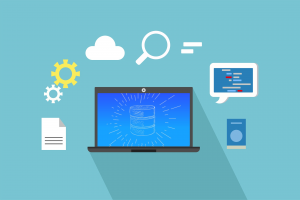Hi friends, in this article we’ll be discussing about SQL Server Always Encrypted, that is being an introduction along with providing a top 5 Questions and Answers.
What is SQL Server Always Encrypted?
Always Encrypted is a pivotal feature in Microsoft SQL Server, Azure SQL Database, and Azure SQL Managed Instance, offering robust data security and privacy protection. It enables organizations to safeguard sensitive data, such as credit card numbers and national identification numbers, from unauthorized access and breaches.
Traditionally, data encryption has been performed at the database level, but Always Encrypted takes a different approach. It ensures encryption keys are never exposed to the database system, enhancing security. Sensitive data is encrypted within client applications before transmission to the database. Encryption keys are managed outside the database, adding an extra layer of protection.
Always Encrypted seamlessly integrates with client applications, handling encryption and decryption automatically. This transparency minimizes disruptions to existing workflows and simplifies adoption. By leveraging Always Encrypted, organizations can enhance the security of sensitive data storage, potentially aiding compliance efforts with regulatory requirements such as GDPR and HIPAA.
Top 5 Questions and Answers about Always Encrypted
Below, I address some common questions typically raised about Always Encrypted and provide answers to help you better grasp the technology.
1. How does Always Encrypted protect sensitive data?
Always Encrypted ensures encryption keys are never revealed to the database system, encrypting data within client applications before transmission. This adds a higher level of security and privacy protection.
2. What are the limitations of Always Encrypted in terms of query support?
Always Encrypted supports limited confidential queries on encrypted data, specifically those involving equality comparisons. However, more complex queries may not be supported.
3. What are the best practices for managing and storing cryptographic keys in Always Encrypted?
Best practices include provisioning column encryption keys and column master keys, storing column master keys in a trusted key store, and ensuring proper encryption of sensitive data with these keys.
4. How does Always Encrypted impact application development and performance?
Always Encrypted makes encryption transparent to applications, automatically handling encryption and decryption processes. While this enhances security, it may require some adjustments in application code and could impact performance.
5. What are the steps involved in setting up Always Encrypted in a database?
Setting up Always Encrypted involves provisioning cryptographic keys, storing column master keys in a trusted key store, encrypting sensitive data, and storing metadata about the keys in the database.
Strengthen your SQL Server Administration Skills – Enroll to our Online Course!
Check our online course on Udemy titled “Essential SQL Server Administration Tips“.
Via the course, you will learn essential hands-on SQL Server Administration tips on SQL Server maintenance, security, performance, integration, error handling and more. Many live demonstrations and downloadable resources included!

Featured Online Courses:
- Working with Python on Windows and SQL Server Databases
- Introduction to Computer Programming for Beginners
- AI Essentials: A Beginner’s Guide to Artificial Intelligence
- Human-AI Synergy: Teams and Collaborative Intelligence
- SQL Server 2022: What’s New – New and Enhanced Features
- Introduction to Azure Database for MySQL
- Boost SQL Server Database Performance with In-Memory OLTP
- Introduction to Azure SQL Database for Beginners
- Essential SQL Server Administration Tips
- SQL Server Fundamentals – SQL Database for Beginners
- Essential SQL Server Development Tips for SQL Developers
- .NET Programming for Beginners – Windows Forms with C#
- SQL Server 2019: What’s New – New and Enhanced Features
- Entity Framework: Getting Started – Complete Beginners Guide
- Data Management for Beginners – Main Principles
- A Guide on How to Start and Monetize a Successful Blog
Read Also
- The OLE DB provider “SQLNCLI11” for linked server “…” supplied inconsistent metadata for a column… – How to Resolve
- SQL Server 2022: What’s New – New and Enhanced Features (Course Preview)
- How to Connect to SQL Server Databases from a Python Program
- What is Data Security and which are its Main Characteristics?
- Introduction to Azure Database for MySQL (Course Preview)
- Data Management for Beginners – Main Principles (Course Preview)
- Advanced SQL Server Features and Techniques for Experienced DBAs
- SQL Server Database Backup and Recovery Guide
Other SQL Server Security-Related Articles
- How to Enable SSL Certificate-Based Encryption on a SQL Server Failover Cluster
- Why You Need to Secure Your SQL Server Instances
- Policy-Based Management in SQL Server
- Advanced SQL Server Features and Techniques for Experienced DBAs
- Should Windows “Built-In\Administrators” Group be SQL Server SysAdmins?
- Frequent Password Expiration: Time to Revise it?
- The “Public” Database Role in SQL Server
- Encrypting SQL Server Databases
- 10 Facts About SQL Server Transparent Data Encryption
- Encrypting a SQL Server Database Backup
- …check all
Subscribe to our newsletter and stay up to date!
Subscribe to our YouTube channel (SQLNetHub TV)
Check our eBooks!
Rate this article:
Reference: SQLNetHub.com (https://www.sqlnethub.com)
© SQLNetHub
Artemakis Artemiou is a seasoned Senior Database and AI/Automation Architect with over 20 years of expertise in the IT industry. As a Certified Database, Cloud, and AI professional, he has been recognized as a thought leader, earning the prestigious Microsoft Data Platform MVP title for nine consecutive years (2009-2018). Driven by a passion for simplifying complex topics, Artemakis shares his expertise through articles, online courses, and speaking engagements. He empowers professionals around the globe to excel in Databases, Cloud, AI, Automation, and Software Development. Committed to innovation and education, Artemakis strives to make technology accessible and impactful for everyone.

